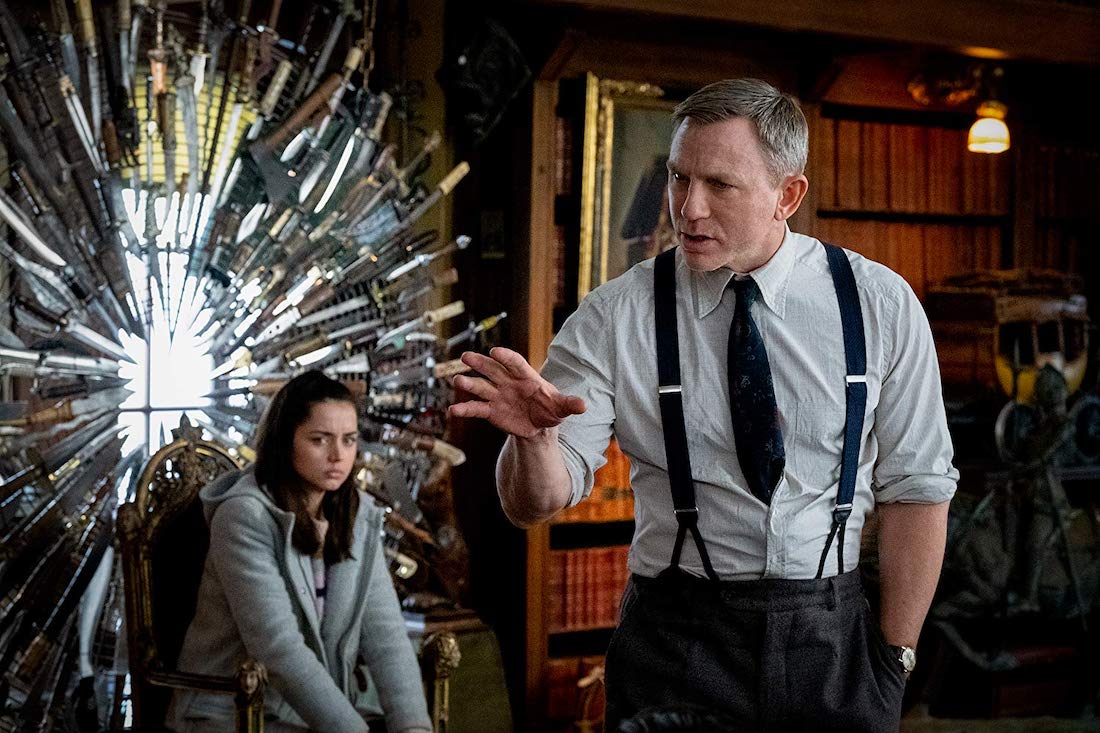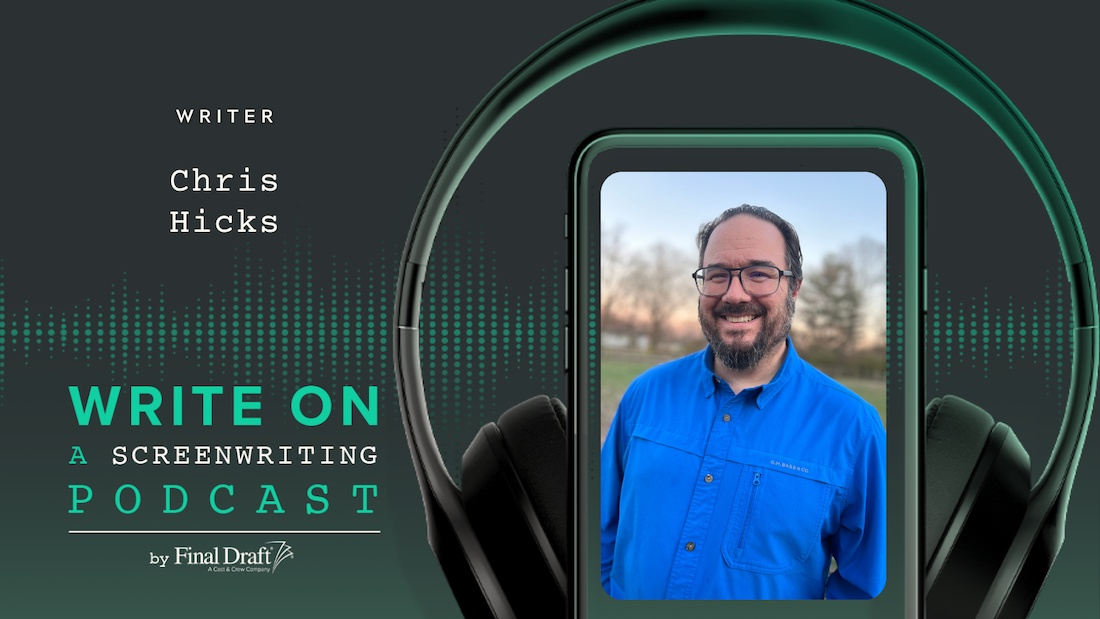How John Wick 4 Writer Broke in With His Extreme Spec Script
March 16, 2023
John Wick is one of the most visually spectacular and emotionally unrelenting action franchises around. Chapter 4 is about to hit theaters - part Western, part Kung Fu film, part Samurai story and part redemption tale, this genre mash up is thrilling, sexy, violent and – oh yeah, one hell of a good time.
From a screenplay by Shay Hatten and Michael Finch, based on characters by Derek Kolstad, the latest sequel picks up after a tense cliff hanger in Chapter 3 only to bewitch the audience with another jaw-dropping twist at the end of Chapter 4. We sat down with writer Shay Hatton to find out more about his writing process and the unconventional spec that landed him the job writing for the John Wick films.
Creating a career as an action writer
At just 29-years-old, Shay Hatten’s career is on fire. A graduate of Loyola Marymount University Film School, he says he never really set out to write action flicks, let alone become the writer of a famous action franchise.
“I never intended to be an action writer specifically,” says Hatten. “My first script was a biopic about Stephen King directing a movie in the 80s. I wrote it from a fully unhinged tone where I was just swinging for the fences and that got me representation.” His script was called Maximum King! and landed on the Black List in 2016.
Though beloved by many, that particular script has yet to be made into a film so Hatten’s agent told him to take that same tone from Maximum King! and put it into an action movie – which Hatten did right away.
The spec that made everything happen
“I wrote Ballerina on spec but that was also a script where I was really trying to go to the extreme because I was trying to get people’s attention. It worked because it ultimately ended up getting retrofitted into a John Wick spinoff film and I think it was the tone of it that popped through,” he says. From Ballerina, he was hired to co-write John Wick 3 and 4.
Ballerina is about a ballet dancer who spends her free time creatively hunting down the people who killed her family. The film is now in post-production starring Ana de Armas in the title role and Keanu Reeves as John Wick. It is set to release later this year.

Learning on the job
Despite all his recent success, Hatten says his action-writing skills were forged from fire. “It’s all learned on the job. I was thrown into the deep end on John Wick 3 as my first real screenwriting job. When you come into that out of film school, you think, ‘Oh, I know how this works. You go and you write the sequence, they film it, it’s great!’ But no. It’s incredibly collaborative, you just have to ride with the process, take everybody’s input into consideration, and just really be open to consistently evolving these sequences throughout production until they reach their final point. That’s something I learned from hours and hours and hours of sitting with Chad [Stahelski] and Keanu. Seeing how Chad puts an action scene together, I’ve learned more from Chad about how to write action than I’ve learned from anybody,” Hatten says.
Writing action set pieces using an organizing principle
It's one thing to spend months watching a talented director/stunt coordinator like Chad Stahelski choreograph and shoot elaborate action sequences, but they have to first start on the page - with words. How does Hatten get started?
“It helps to have an organizing principle,” he says. “In the fourth movie, there’s this concept that Bill Skarsgård’s character [Marquis] is observing the action as if he’s watching it on a kind of chess board. He has this scale model of [Paris] and he knows that John has to get from point A to point B. He’s literally moving these tokens around the board to represent for himself visually where John is progressing throughout the city. That was really a fun idea to have because it served as a guiding principle. As a writer, I know John has to get from point A to point B and I can recognize where he is along the course.” John Wick’s ultimate destination is Sacre-Coeur, where the climax takes place.
Hatten says he thinks of it like mapping out a journey for his protagonist and then trying to figure out every obstacle he can throw at him. If John Wick needs to get around the Arc de Triomphe, the craziest roundabout in Europe, what physical obstacles can he put in his way? If John Wick needs to climb up the tallest staircase in Paris, what characters might knock him down the stairs? If John Wick battles at a Berlin night club, could the ambient water and fire décor impede John’s efforts? Basically, if you can imagine it, it can be part of a thrilling action scene as a physical or psychological roadblock the protagonist must overcome.
All these techniques are super helpful, especially for a movie that has 14 action set pieces that must look different from each other but have a clear beginning, middle and end that helps to service the story.
Think of each action sequence as its own movie
“Action scenes can get really complicated! Especially in a movie with sequences this big, the sequences become movies within themselves,” says Hatten, adding, “They all have a three-act structure. For instance, when they’re in Japan at the Osaka Continental, there’s a whole massive drama that plays out between Akira [Rina Sawayama], Shimazu [Hiroyuki Sanada] and Caine [Donnie Yen]. It’s basically a whole movie that happens with those characters but within the context of this action sequence in the first act.”
If you feel yourself getting lost in the action, Hatten says to, “Make sure you’re beating everything out, tracking everybody, and not losing sight of character which is the most important thing.”
Writing from character
One of the most enthralling characters in Chapter 4 is Akira, played by Japanese/British pop star Rina Sawayama. The daughter of John Wick’s ally, Shimazu, Akira can fight like the most hardened assassin, but is also sophisticated and has a moral center. Hatten says her character grew from the place of trying to service John’s emotional journey.
“We knew we needed somebody who was an ally to John who was giving him shelter. That’s how we came up with the [Shimazu] character. Just in writing that character we were asking ourselves, what is this guy’s deal, what’s his story? As we tried to expand that character and backstory, we came up with this idea that he had a daughter. That’s a really interesting thing to explore – a father/daughter relationship within the violent assassin world and balancing that relationship against the action, the idea that anything can break out at any moment,” he says.
Build familial relationships into movies
Adding these types of familial relationships in an action film can add depth to the story and create stakes. This made me think about the main storyline in this year’s Oscar-winner for Best Picture Everything Everywhere All at Once. I spoke to Hatten the day after the Oscars and discovered that he was a big fan of the film.
“What I really love about [Everything Everywhere All at Once] is that if you actually look at the building blocks of it, it’s a movie with a really clean 3-act structure and a strong emotional backbone of a mother-daughter relationship running through it. Within the lines of that, they are just swinging for the fences in every possible scene, throwing all these really wild elements at it. It makes for an unparalleled amount of fun as a viewing experience but also, you walk away from it with a great emotional story about a mother and a daughter trying to connect. I admire a strong, conventional structure with weirdness thrown into the bones of it,” he says.
Advice for writing a spec
In terms of advice for writers, Hatten says, “Don’t hold back when you’re writing a spec. Write something that feels potentially more out there, more wild, and hopefully people will recognize the imagination and love of the genre that you put into it.”
In other words, lead with your imagination, write from character and bring passion to what you write.
John Wick: Chapter 4 opens in theaters March 24.
Written by: Shanee Edwards
Shanee Edwards is an L.A.-based screenwriter, journalist and novelist who recently won The Next MacGyver television writing competition to create a TV show about a female engineer and was honored to be mentored by actress/producers America Ferrera. Shanee's first novel, Ada Lovelace: The Countess Who Dreamed in Numbers was published by Conrad Press in 2019. Currently, she is working on a biopic of controversial nurse Florence Nightingale. Shanee’s ultimate goal is to tell stories about strong, spirited women whose passion, humor and courage inspire us all.- Topics:
- Screenwriting & Craft




